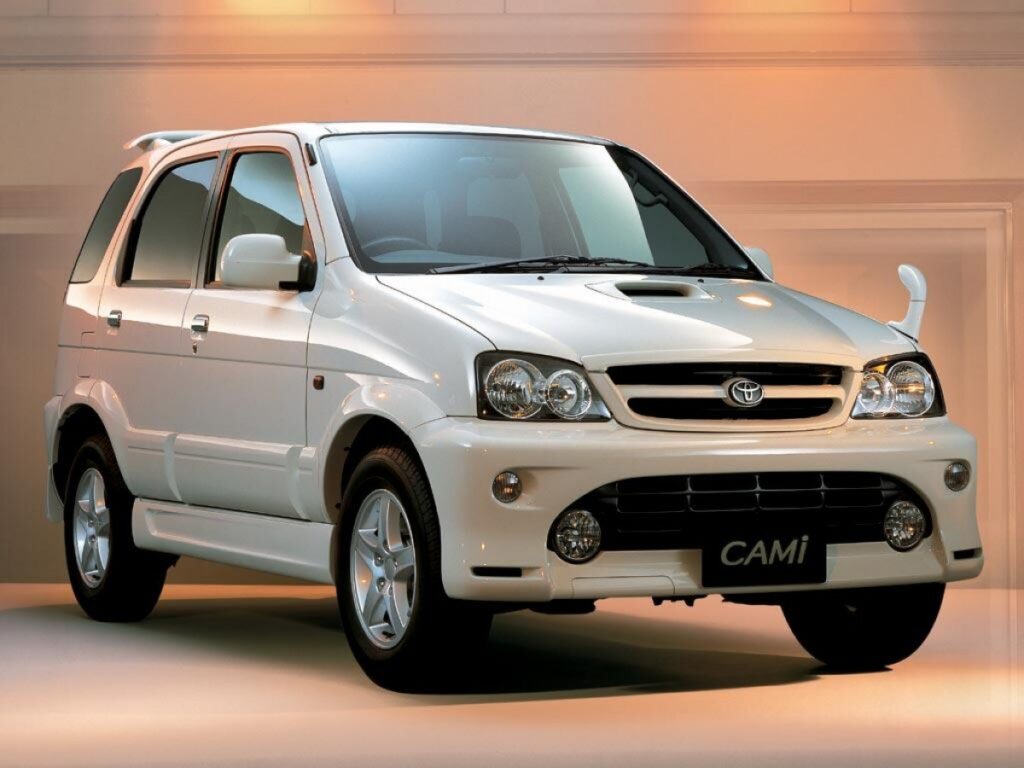Toyota Cami 1999-2005 with a gasoline engine: repair manual, wiring diagrams, operating instructions, maintenance manual free download PDF
See also: Toyota Repair Manual
| Title | File Size | Download Links |
| Toyota Cami 1999-2005 (with engines K3-VE, K3-VET, HC-EJ) Service & Repair Manual [ZIP, rus] | 66.5Mb | Download |
The presented cars are real passenger station wagons, manoeuvrable and compact, which are great for driving in a metropolis. Products of world-renowned Japanese automobile corporations, these cars are distinguished by stylish appearance, convenience and predictability in handling, high technical characteristics, and most importantly, durability and excellent build quality. However, any motorist knows that the car will work properly to the maximum only if the car owner does not neglect the observance of operating standards, regular maintenance and timely repairs if necessary. This Toyota Cami repair manual is intended for all drivers interested in their vehicles, as well as service station and auto service employees who want to put into practice new automotive knowledge and skills.
The manual also discusses the issues of competent operation and maintenance, as well as the design of rear-wheel drive and all-wheel drive (2WD & 4WD) Toyota Cami cars produced in 1999-2005, running on gasoline engines HC-EJ (1.3 l), K3-VE (1 , 3 l) and KZ-VET (1.3 l Turbo).
The main text of this Toyota Cami repair manual is accompanied by hundreds of high-quality drawings, with the help of which it is much easier to study the manual and, most importantly, to apply new knowledge in practice. In addition, the Toyota Cami repair manual has an extended alphabetical index, so it is easy to navigate and find the information you need. The first chapters of the manual contain basic theoretical information that everyone who has been granted a driving license should be well aware of. So, the Toyota Cami device is described in detail from the outside and from the inside, there are technical characteristics of all the main components of the car, the principles of their operation and the rules of use are indicated. Illustrated operating instructions for Toyota Cami will allow the driver to thoroughly get to know his car and take advantage of the potential working resources of the car. A maintenance schedule and a description of all preventive checks and the necessary tools for this will help the car enthusiast to keep the car on the move and, to a certain extent, protect themselves from accidents on the road.
The rest of the chapters of the Toyota Cami service manual are devoted to the issues of diagnosing and repairing a car, which the driver can carry out on his own in a garage or directly on the road, if an unforeseen breakdown caught him halfway. Any driver with at least superficial experience in this area can use the instructions given to identify the causes of the malfunction and correctly eliminate the breakdown. To adjust and repair the electronic component of the car, the driver will need all the Toyota Cami wiring diagrams given in the book. All instructions for assembly, disassembly, lubrication, replacement, adjustment and actual repair are provided with clear drawings, written clearly and in strict sequence, including even intermediate steps. Observing the proposed algorithm of actions, the motorist will be able to correctly and accurately carry out the above types of work with the main units, components and systems of the machine – the engine (including using its self-diagnosis), gearbox, brake system, passive safety system, steering, suspension, etc. .d. In the appendix to the manual, the reader will find comparative tables, tips for choosing lubricants and working fluids, safety rules during repairs and other useful reference information.
Toyota Cami background information
The compact SUV Toyota Cami, produced from 1999 to 2006 and sold only in the domestic market in Japan, was a copy of the first generation of the Daihatsu Terios model.
The car was equipped with a 1.3-liter four-cylinder engine (90-92 hp), which was paired with a five-speed manual transmission or a four-speed automatic transmission. The drive could be rear or permanent full with a forced blocking of the center differential. A more powerful version of the Toyota Cami had a turbocharged engine of the same volume, developing 140 forces, four-wheel drive and an automatic transmission.

Toyota Cami
